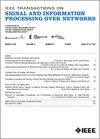Time-Aware Distributed Sequential Detection of Gas Dispersion via Wireless Sensor Networks
IF 3
3区 计算机科学
Q2 ENGINEERING, ELECTRICAL & ELECTRONIC
IEEE Transactions on Signal and Information Processing over Networks
Pub Date : 2023-10-13
DOI:10.1109/TSIPN.2023.3324586
引用次数: 0
Abstract
This work addresses the problem of detecting gas dispersions through concentration sensors with wireless transmission capabilities organized as a distributed Wireless Sensor Network (WSN). The concentration sensors in the WSN perform local sequential detection (SD) and transmit their individual decisions to the Fusion Center (FC) according to a transmission rule designed to meet the low-energy requirements of a wireless setup. The FC receives the transmissions sent by the sensors and makes a more reliable global decision by employing a SD algorithm. Two variants of the SD algorithm named基于无线传感器网络的气体分散时间感知分布式顺序检测
这项工作解决了通过具有无线传输能力的浓度传感器检测气体分散的问题,这些传感器被组织成一个分布式无线传感器网络(WSN)。WSN中的浓度传感器执行本地顺序检测(SD),并根据旨在满足无线设置的低能耗要求的传输规则将其各自的决策传输到融合中心(FC)。FC接收传感器发送的信息,采用SD算法做出更可靠的全局决策。提出了连续采样算法(Continuous Sampling algorithm, CSA)和决策触发采样算法(Decision-Triggered Sampling algorithm, DTSA)两种SD算法的变体,每一种都有自己的传输规则,并与全批处理算法(Batch Sampling algorithm, BSA)进行了比较。CSA作为一个时间感知检测器,将每次传输的时间纳入检测规则。提出的框架将气体分散模型纳入FC的决策规则,并利用实时天气测量。该案例研究涉及二氧化碳(CO2)的意外扩散。根据接收机工作特性(ROC)曲线以及平均决策延迟和通信成本来评估系统性能。
本文章由计算机程序翻译,如有差异,请以英文原文为准。
求助全文
约1分钟内获得全文
求助全文
来源期刊

IEEE Transactions on Signal and Information Processing over Networks
Computer Science-Computer Networks and Communications
CiteScore
5.80
自引率
12.50%
发文量
56
期刊介绍:
The IEEE Transactions on Signal and Information Processing over Networks publishes high-quality papers that extend the classical notions of processing of signals defined over vector spaces (e.g. time and space) to processing of signals and information (data) defined over networks, potentially dynamically varying. In signal processing over networks, the topology of the network may define structural relationships in the data, or may constrain processing of the data. Topics include distributed algorithms for filtering, detection, estimation, adaptation and learning, model selection, data fusion, and diffusion or evolution of information over such networks, and applications of distributed signal processing.
 求助内容:
求助内容: 应助结果提醒方式:
应助结果提醒方式:


